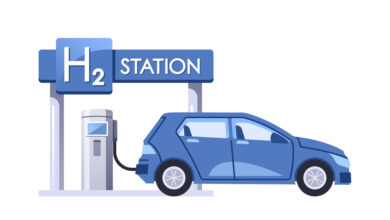The types of training that will soon be in demand


Image credit: Depositphotos.com
Automotive technicians can expect plenty of opportunities to learn about advanced driver assistance systems, turbocharging, electrification and software diagnostics in the near future.
Those were the key topics Bob Cushing, president of Worldpac, highlighted as growing areas of specialized training as the automotive aftermarket rapidly evolves. These types of classes will be crucial in the coming years, he said during a question and answer session with members of the media at the Worldpac Supplier and Training Expo in Nashville.
Cushing highlighted the importance of adapting to new technologies that will be paramount for the future of automotive repair ad will be a focus for attendees.
“I would tell you there’s going to be plenty more classes on ADAS, for sure, as that continues to permeate basically [through] all the new cars that are being sold,” Cushing said.
ADAS, a critical component in modern vehicles, requires precise calibration and understanding to ensure driver safety, making it a vital area for continued education. He noted that some shop owners have already recognized the value of investing in ADAS training, considering it the best investment they ever made.


From left, Bob Cushing, Worldpac, and Shane O’Kelly, Advance Auto Parts, speak to the media at the 2024 Wordlpac STX event in Nashville
Turbocharging, another key area, will also see increased focus. As smaller engines become more prevalent, the ability to enhance performance through turbocharging becomes increasingly important, he noted.
“Turbocharging, that’s obviously key, as far as on what you’ll be able to do to boost horsepower [and be able to] do a lot of things on small engines,” Cushing explained.
Electrification of vehicles is another significant trend that will continue to shape future training programs. “You’ll see that electrification is clearly going to be there, for sure,” Cushing said.
He anticipated more car-line-specific classes on electric vehicles, in addition to general training. The high voltage systems in EVs pose significant risks, making it essential for technicians to understand how to safely work with these systems, Cushing noted.
Software-driven classes will be crucial as well, particularly for EVs.
“The No. 1 issue you have on EVs is software. I think that’s going to be another critically important part of dealing with diagnostics and software,” Cushing said.
With software being integral to the operation and maintenance of modern vehicles, proficiency in this area is essential, he added.
Cushing further emphasized the importance of calibration training.
“It’s all about teaching how to calibrate. So when we think about what classes, we’re going to have, oh boy, that’s one great particular topic to know about — calibration. How to look at it, how to get it right, and do all that,” he said.
The hesitancy of some shops to adopt these new technologies and training methods stems from the potential risks and costs involved. However, Cushing believes that as the industry evolves, more shops will recognize the necessity of these investments especially with the recognition of the importance of proper calibration to have accurate, functioning ADAS .
“The concern there is: A mistake could be costly,” he said.






